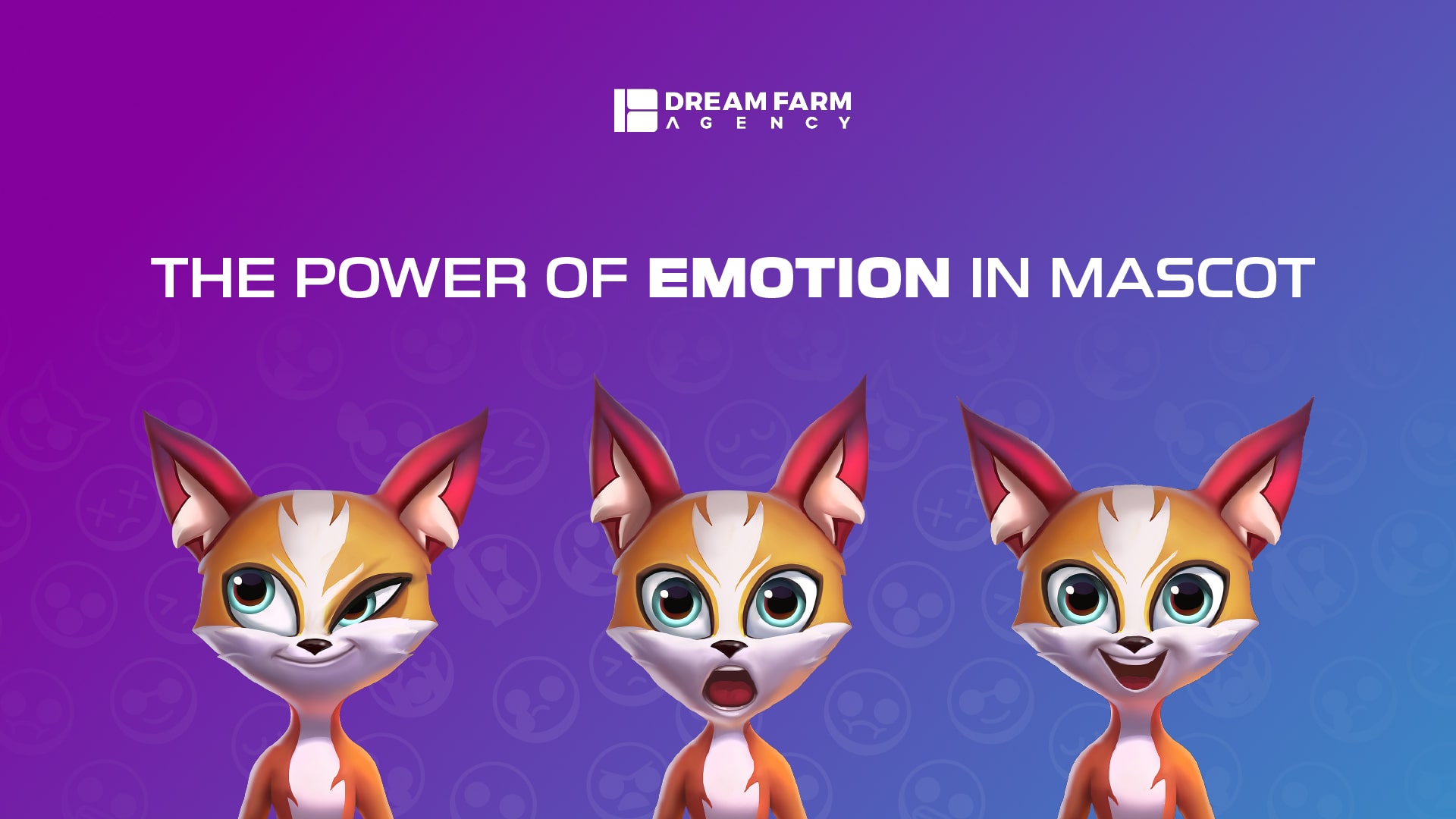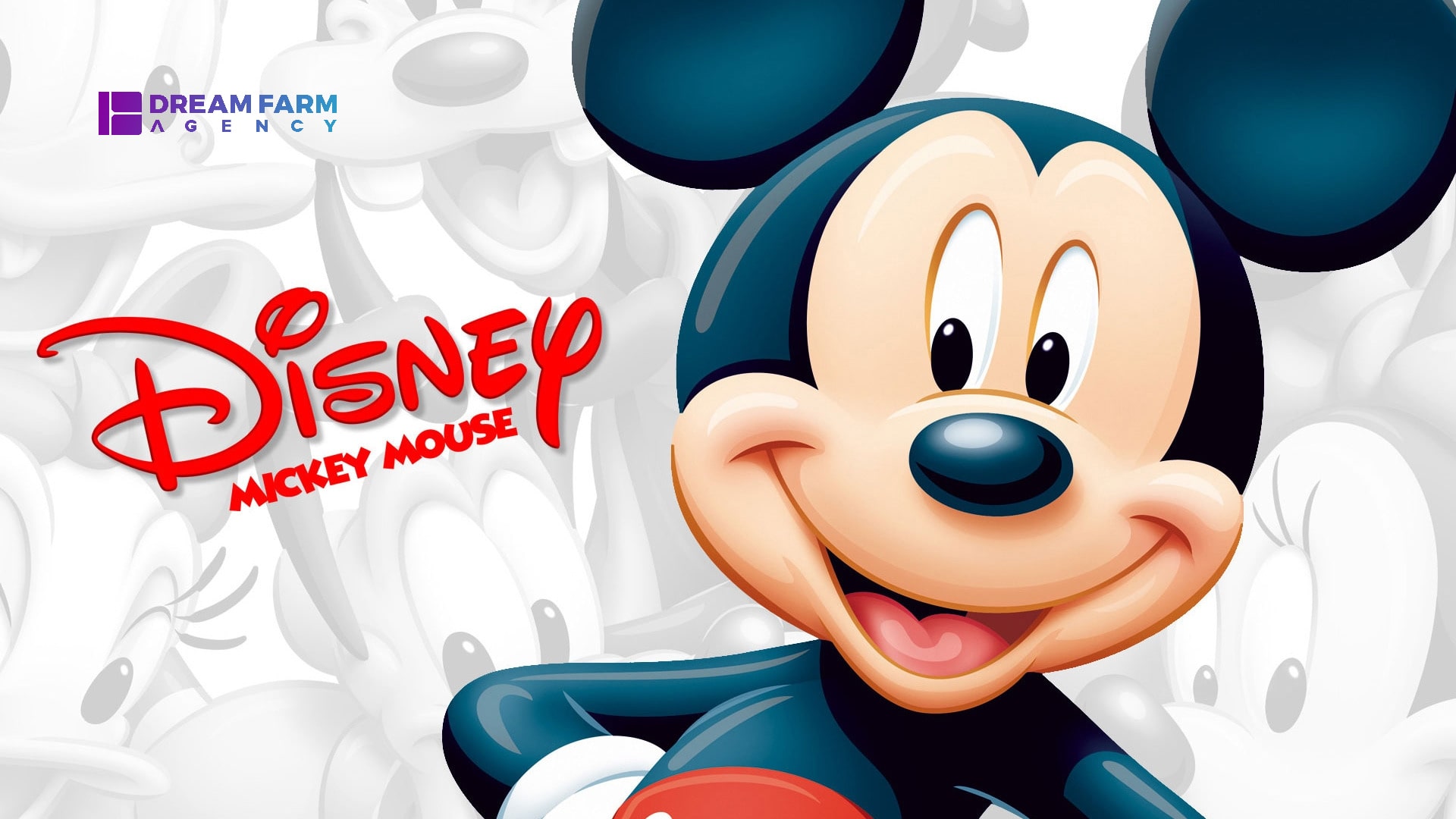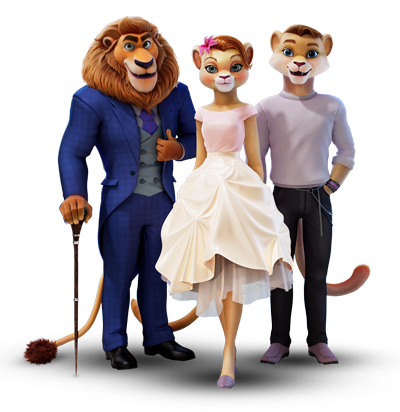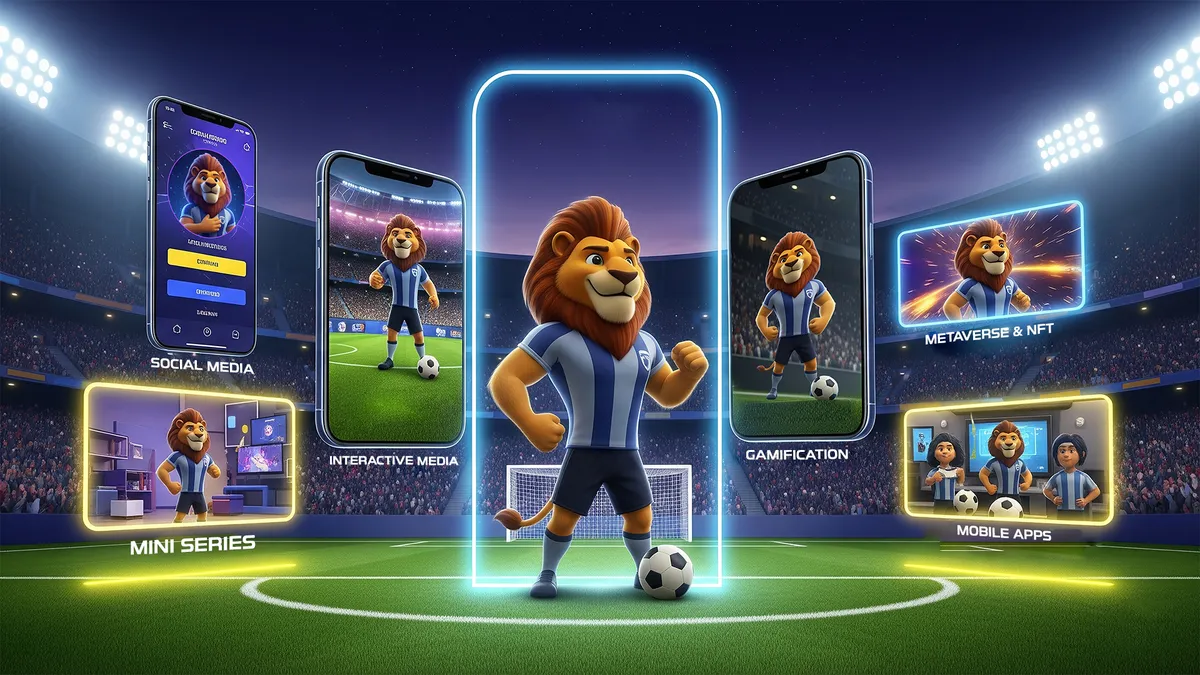
Have you ever felt your heartbeat while watching a movie, when the lead character is falling from a tall building and all that is tolerating his weight is his hand?
Or when a murderer is looking for the little girl who is hiding under the bed?
But why? Why do we love stories so much? What makes us so connected to them? And how is this going to help businesses find a new solution for their marketing issues?
In this blog post, we’ll answer those questions by focusing on one powerful tool: the brand mascot. To understand how emotions are pictured through them, it’s essential to first know what brand mascots are. From there, we’ll dive into the benefits and challenges of this strategy, and how technology can help us do it better.
⚠ Please note that we have used the words “character” and “mascot” interchangeably in this blog post because we see a mascot as a character which is designed for a brand.
The Psychology of Emotional Attachment
Have you ever thought about why you feel so connected to stories’ characters? You definitely know there is nothing real about fictional characters!
There are 2 reasons to this:
In the 1980s a group of scientists found a phenomenon called “mirror neurons”. These neurons are the reason why we feel empathetic toward a person who is around us or even on a screen! Empathy is the reason why we get emotionally attached to a person or a character. The study was conducted on some monkeys. Scientists observed monkeys’ brains to find out the same area is triggered when a monkey does a certain action and when it watches another monkey does that. The neurons causing this phenomenon were called “mirror neurons”.
There is also another study. Paul J. Zak says It is all about a neurochemical called oxytocin. Oxytocin is released when you feel trusted or shown kindness. It also makes you want to cooperate with others. As J.Zak has claimed in his studies, Oxytocin does this by enhancing the sense of empathy, our ability to experience others’ emotions. Character-driven stories cause this neurochemical to be released and that is why we feel connected to the characters.
Assumably visual characters hack your Oxytocin system! But relax. There is nothing to lose. Your brain likes it! ????
Building a Character’s Arc
Mascots are there to tell a story. Not any story of course, but the story of your brand.
People have always liked to personify concepts and give them humane adjectives. When we want to talk about God, aliens, or even animals in stories (such as characters in animal farm by Orwell) we use humane adjectives and postures to describe them. We do this because we need to feel connected to that creature or concept.
So, it is important for a character to have its emotions aligned with the brand. To have control over the character’s emotion along the story, we need something called an “emotional arc” which is also known as a “character arc”.
Every character needs this, no matter if it is a fictional character or a mascot. As a creator you should know when to start telling the character’s story and how to lead him/her through the story.
You can hear more about it from Kurt Vonnegut, the master of dark humor, in the video below. This might seem a little old to you but trust us, It is brilliant!
Iconic Mascots and Their Emotional approach
As we mentioned before, a mascot has emotions, ups and downs, triumphs and struggles, like any character in movies or stories. When talking about emotional moments, we can think of some stereotypical plots such as a steady rise from bad to good fortune, or a fall from good to bad.
But how do characters react to emotional moments? There are different types but here we talk about 2 of them:
- A tale of perseverance
- Overcoming challenges with humor
A Tale of Perseverance
This is one of the most famous tales that can be told by a character or a mascot.
One of the most famous mascots that lives so persistently is Mickey Mouse. He is quite famous. You must know him! ????
Mickey Mouse is not only a symbol of joy but also a character who consistently strives to do what is right, no matter what it takes. This determination is what makes him inspiring. Anyone could argue that Disney is the reason for his global success, but it’s not just about the origin of Mickey Mouse; he has become one of the most recognizable symbols in the world today.

So, if your brand’s identity is to be resilient and strong, if you want to show the audience that your brand is always there to find a solution, your mascot should have the same energy as him..
Overcoming challenges with humor
A character that really matches the idea of overcoming the challenges with humor is the Energizer Bunny. Do you know him? This mascot speaks for the brand and has become quite famous. The Battery Bunny is a pink creature, similar to a toy, with a pair of sunglasses that keeps dancing and playing drums even in hard and challenging situations. The humorous and playful nature of it is obvious through its energetic and resilient characteristic. The Bunny has the ability to control the challenges in a relaxed and humorous posture which completely suits the brand’s message (long-lasting) power. This pink fluffy bunny is a fantastic example of how a mascot can convey the idea of overcoming challenges with humor.
Therefore, the first step to building a successful mascot is knowing your brand. It is a great help to have a brand book, know your brand archetype, and decide based on that.
This is exactly what we do in Dream Farm Agency before designing a character for a brand.
When working with a brand, we carefully analyze its industry, competitors, and strengths.
If they don’t have information such as brand archetype or a brand book, we offer a comprehensive service in developing the conceptual and visual identity of the brand.
By aligning these insights with the brand’s values, voice, slogans, and mission, we meticulously define a brand identity that will make a lasting positive impression on customers. This stage is crucial as it has the potential to significantly enhance customer loyalty.
If you’re thinking about adding a mascot to your communication plan, our team is here to help.
With over 10 years of experience and the development of more than 2,500 characters, we’ll guide you through every step to unlock the full potential of your new team member!
Learn more
Tips to fully Engage Audience with Emotion
Storytelling has the power to greatly benefit your business. It can increase profits, create a stronger emotional bond with the audience, and generate positive feelings towards the brand. But how?
There are a few tips that can help you create the right emotion while storytelling:
1.Watch the story core
The story universe can play an important role. The way you write and represent stories can evoke various emotions, such as empathy, curiosity, excitement, or even anger. To create emotional stories, it is important to have a clear purpose, an engaging plot, relatable characters, and a meaning The Story Universeful message. You can also use expressive language, vivid details, and rhetorical devices to hunt your audience’s senses and imagination.
2.Use visual Cues
It is not only the story that can evoke emotions in people but also the way it is being pictured is important. Colors, characters, and expressions can have a great impact on the audience.
3.Use proper sounds and music
You may have not paid attention but music plays an important role in conveying the message. You can watch the same scene with different music and have a totally different interpretation.
Take a look at the video below as an example:
4.Keep in mind the idiosyncratic features of audience
To persuade your audience, it’s important to understand that you can not just rely on emotions.
You should know that your audience has special preferences and expectations. So, you need to tailor your emotions based on them.
This is easier said than done because it requires knowing your audience really well and knowing which emotions will be similar to their point of view.
For example, think about communicating with customers. In this case you will use emotions like delight, satisfaction, or loyalty may be effective. But when talking to employees, emotions such as recognition, appreciation, or motivation may be more appropriate. And when communicating with stakeholders, emotions like confidence, reliability, or partnership may be the key.
5.Address a Spectrum of emotions
We are fully aware that human beings are complicated amalgamations of emotions such as anger, surprise, sadness, fear, hope, and Interest that could make a huge contribution to your story under various circumstances.
6.Consider the Impact of Cultural Sensitivities on Emotion
Different countries come with different cultures. Every country has its own source of humor to laugh at, redlines to be sensitive about and taboos to avoid. So, something which is funny in Europe, can be considered rude in Asia. You need to be cautious about this issue while storytelling.
If you are working in a global company like McDonald’s, you might find it helpful to separate regions and localize your story based on the culture.
Speaking of McDonald’s, watch the comparison of two video ads, same in story, but different in visuals:
How McDonald’s executed on producing the same ad for different markets #marketing #advertising #mcdonalds pic.twitter.com/AzWTNHMHlz
— Lady Mihaela (@LadyMihaelaTarg) August 14, 2023
Challenges in Crafting Emotion in mascot narrative
Designing a character for a brand is not an easy job. There are so many challenges in the way.
One of which is keeping the balance of emotions. You do not want the character to be overdramatized or too genuine in terms of emotions. Here we name some of the obstacles you may face:
1. Lack of Emotional Connection: One of the most important challenges is designing a mascot that can pluck the nerve and trigger a sincere emotion in the targeted audience.
It is difficult to create the right balance between being relatable and unique.
2. Consistency and Authenticity: Being consistent and authentic through the whole mascot’s narrative can be challenging. It’s important to ensure that the mascot’s emotions, actions, and behaviors align with the personality and the backstory that its creator had in mind for it. You cannot let the character change its personality or values in the middle of the narrative.
You can see this in any story. Belle is always kind, Snow white is an animal lover, and Prince Eric is always brave. These characteristics are never changed throughout the narrative.
3. Overcoming Stereotypes: You should avoid behavioral stereotypes when crafting emotional mascot narratives. Talking about stereotypes can limit the mascot’s attraction and hold back its ability to connect with a wide range of audience. It’s important to create a mascot that is inclusive and relatable to lots of individuals.
4. Balancing Complexity: Stories often need a certain level of complexity to engage the audience. But it’s also important to set a balance between complexity and simplicity. If the narrative becomes too complicated, it will confuse or disengage the audience.
5. Evoking the Desired Emotions: Narrating a mascot story that continually calls up the emotions you wanted as the creator, can be hard. It needs you to carefully consider the brand identity, storyline, character development, and visual cues to make sure that the audience feels the emotions that YOU wanted, throughout the narrative.
What Dream farm utilizes to conquer the obstacles is benefiting from a team of elites in marketing, art, and technology to provide different perspectives and help overcome these challenges.
The Future of Mascot Storytelling
Mascot storytelling has a bright future indeed because it has exciting potentials and possibilities. As technology evolves, we can expect to see even more engaging and innovative experiences that connect to the audience on a deeper level of emotion.
These days we can see technologies such as Augmented Reality (AR) and Virtual Reality (VR) finding their ways into different aspects of human life, mascot storytelling included.
These technologies can help users to experience a new world and interact with mascots in a more realistic way.
Exactly like what happened with “Pokemon Go” in the world of VR games, users can have conversations, play games, or go on adventures with mascots. People can also create a sense of friendship and emotional attachment with them.
Another type of technology that is going to play an absolutely significant role in the future of mascot storytelling is Artificial Intelligence (AI).
Mascots that are created with AI can learn the user’s interactions and adopt themselves based on what they receive. They can also give customized responses and make the user feel totally connected to them.
Also you can find a more tangible example in this TikTok account:
@aicenturyclips
He has created a character with AI and is performing well on TikTok with it.
Also, with technology people now have the potential to participate and co-create mascots or their stories. You can totally understand it from the growth rate in “interactive video games”.
In recent years video games like “Red Dead” have gone viral because of their interactive nature. People see themselves in writing a character’s destiny. It can also happen in brands’ storytelling if they are creative enough.
Overall, it is so obvious that the future of mascots is in the hands of technologies like VR, AI, and the rest.
These tools have the potential to create powerful and emotional experiences that engage audiences in new and exciting ways.
How Can Dream Farm Agency help?
When it comes to creating a brand mascot that truly resonates with your audience, it’s important to work with experienced and flexible teams. At Dream Farm Agency, we understand the importance of delivering a memorable mascot that captures the essence of your brand. With our years of expertise and dedication to quality, we offer a total solution service that covers every step of the mascot creation process. From concept development to animation, we take care of it all in-house, ensuring a cohesive and impactful mascot that will leave a lasting impression on your audience.

Rojan



